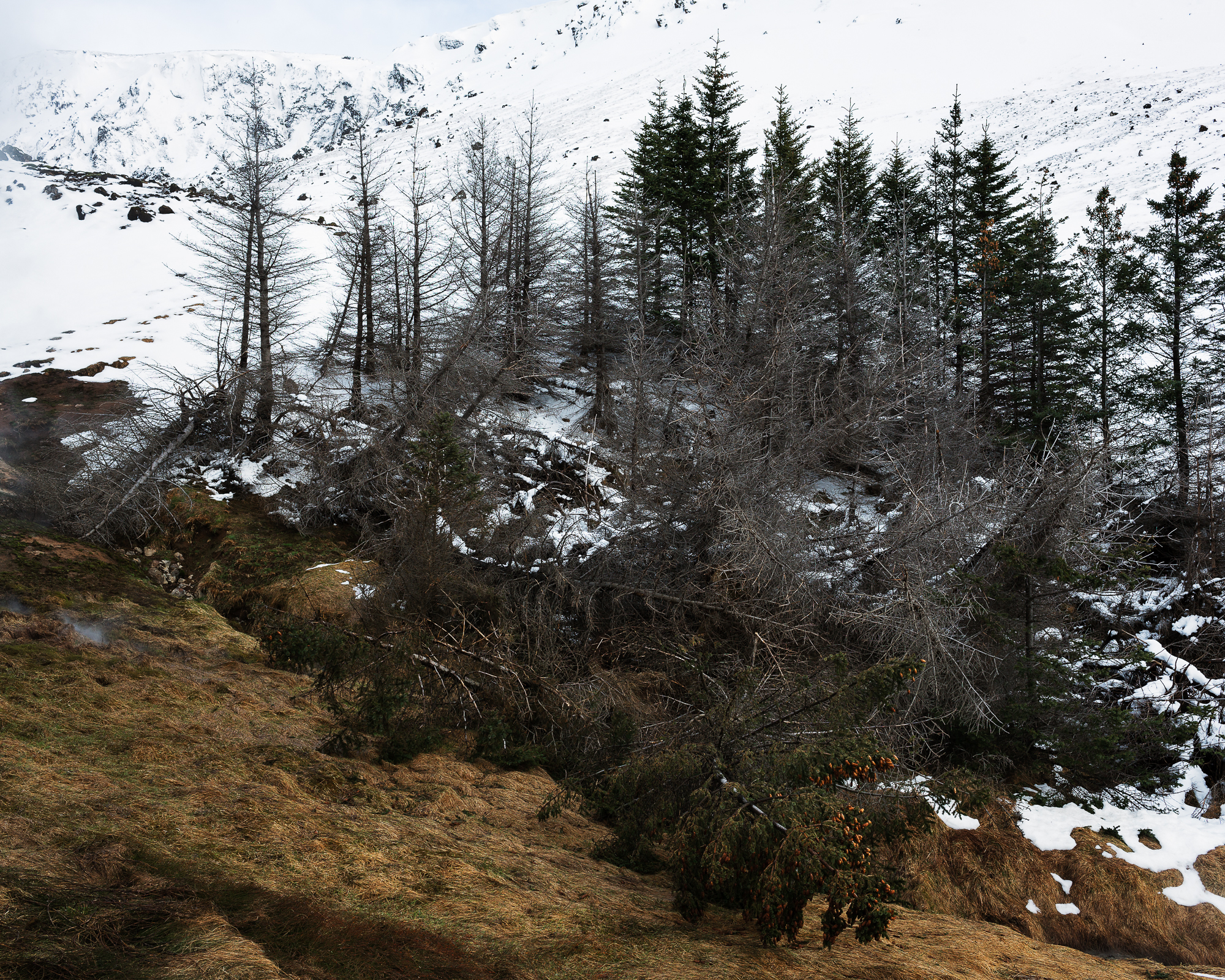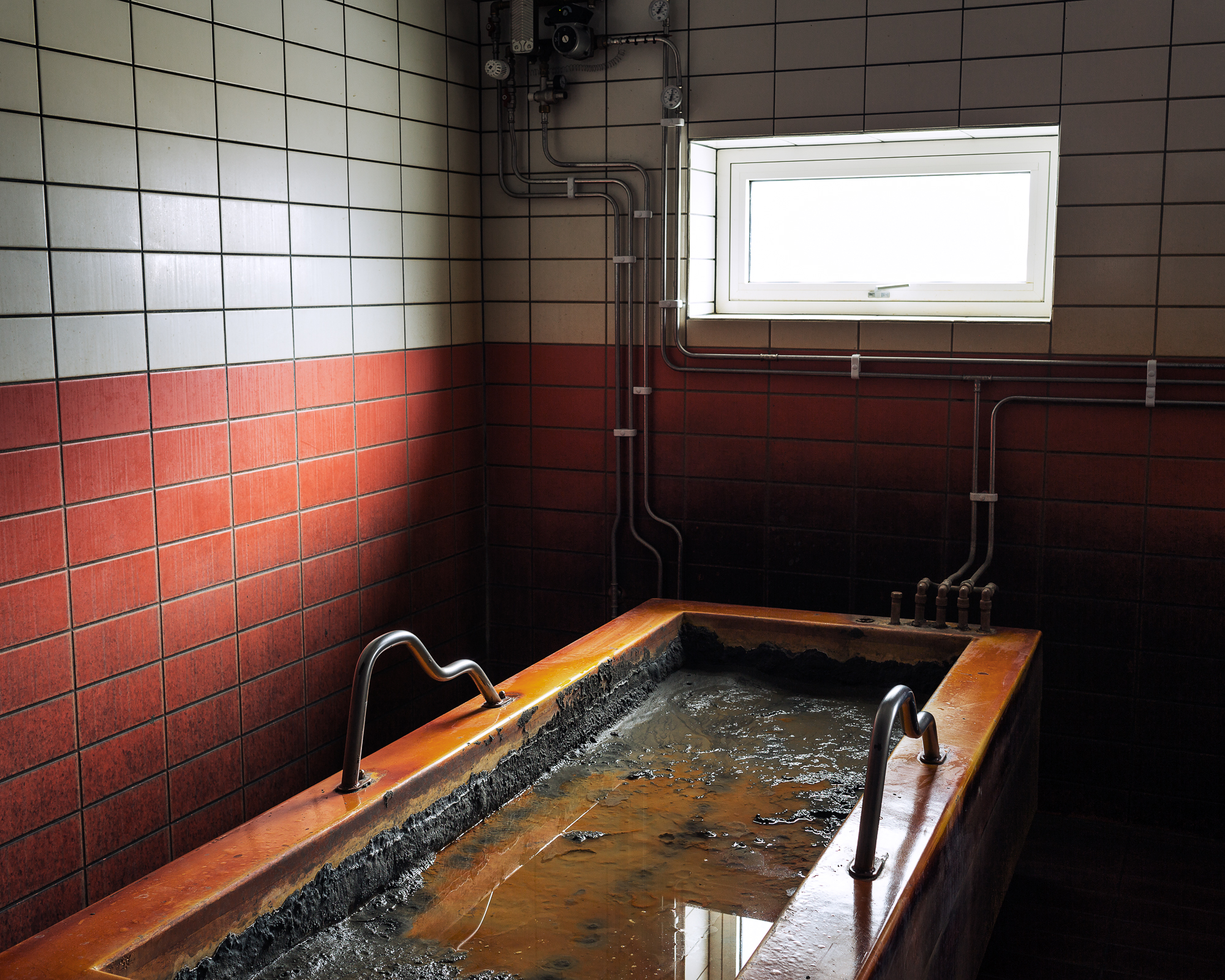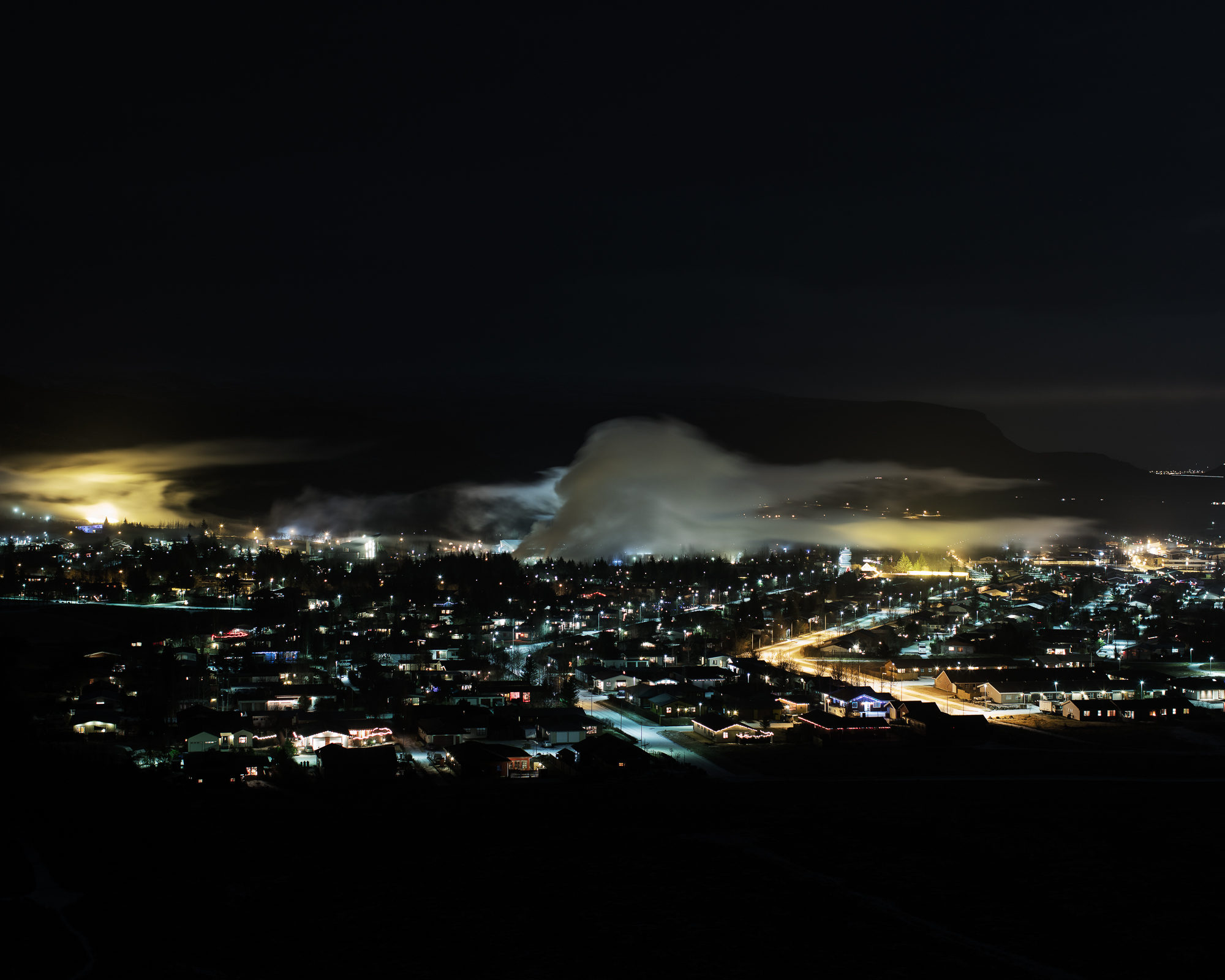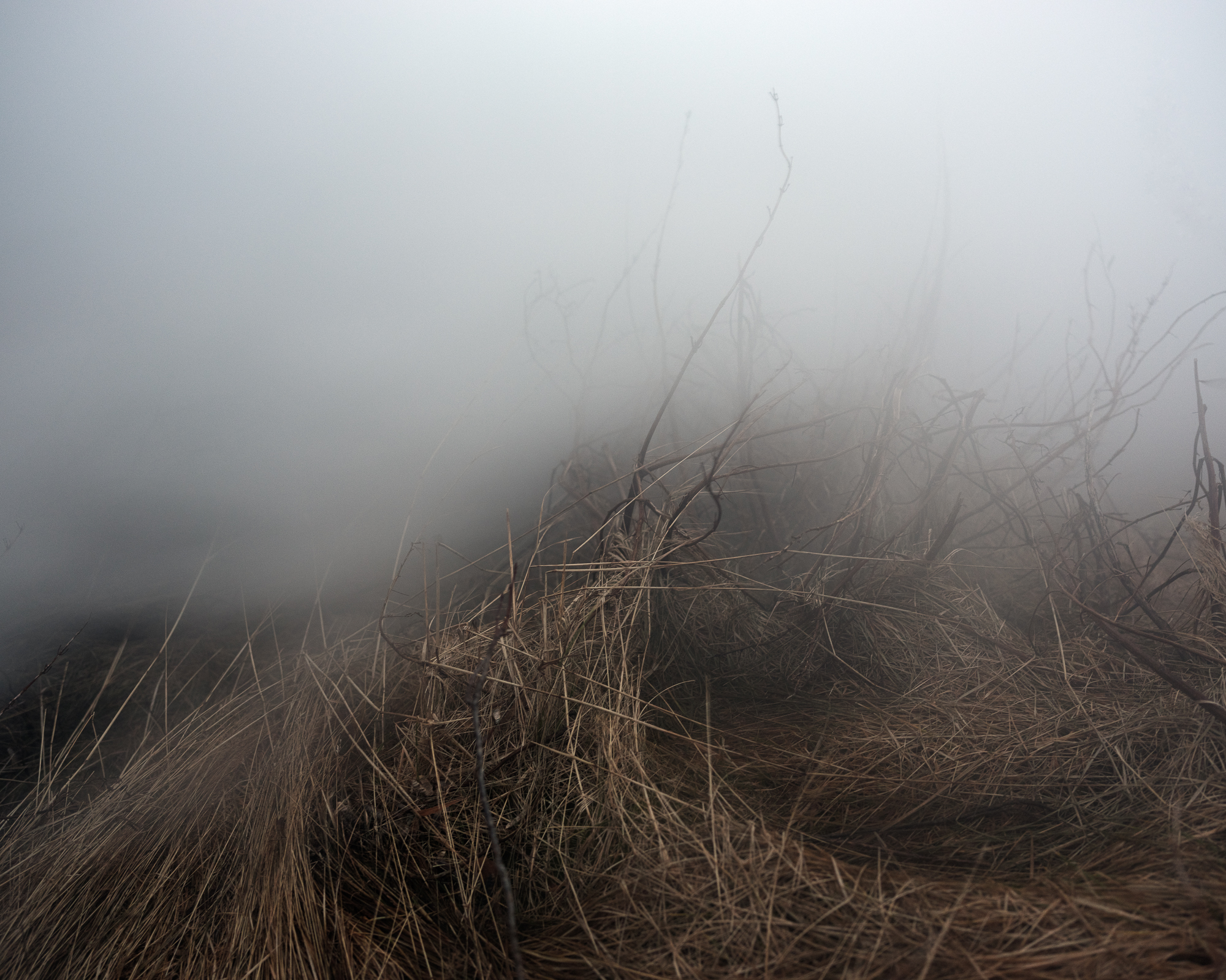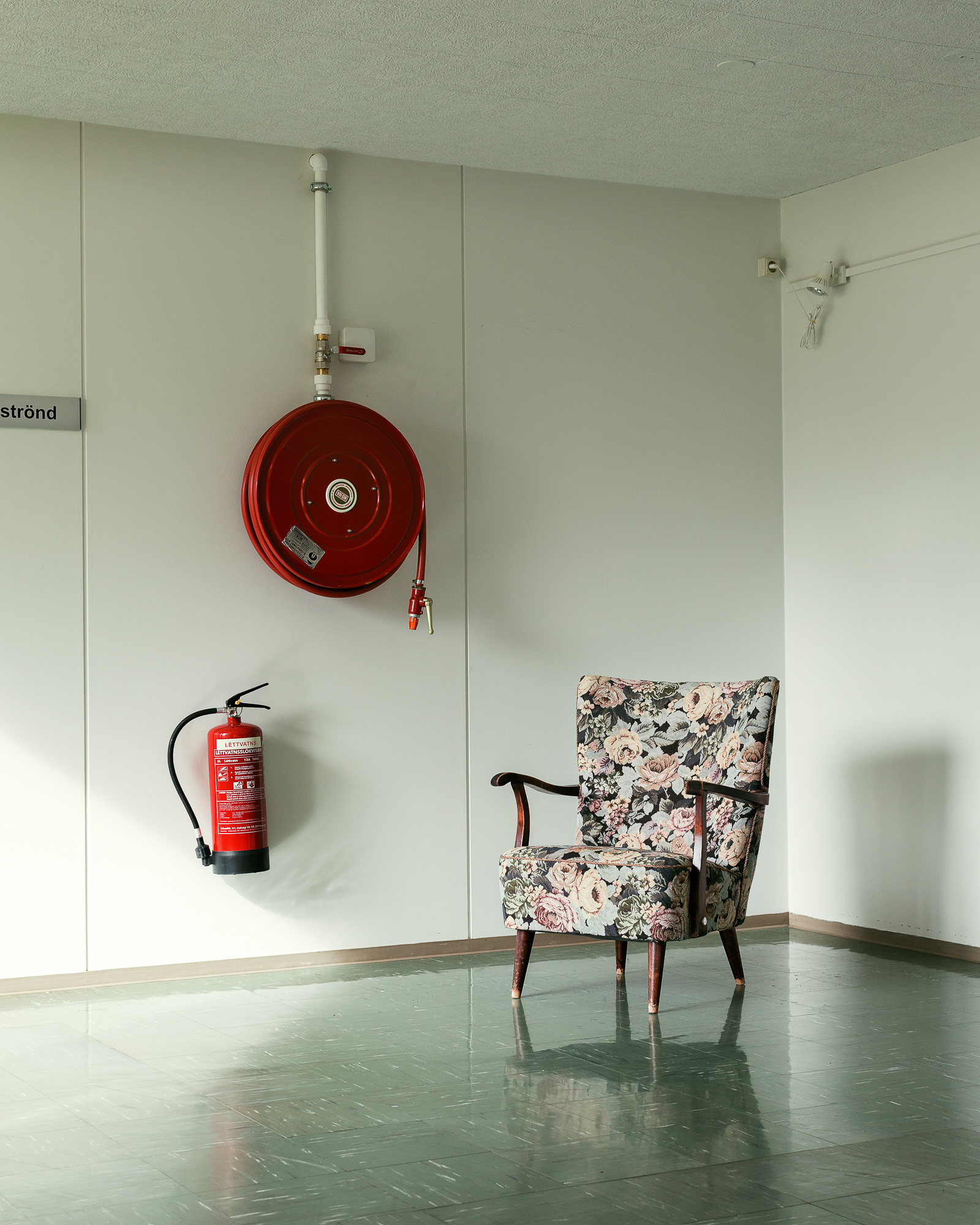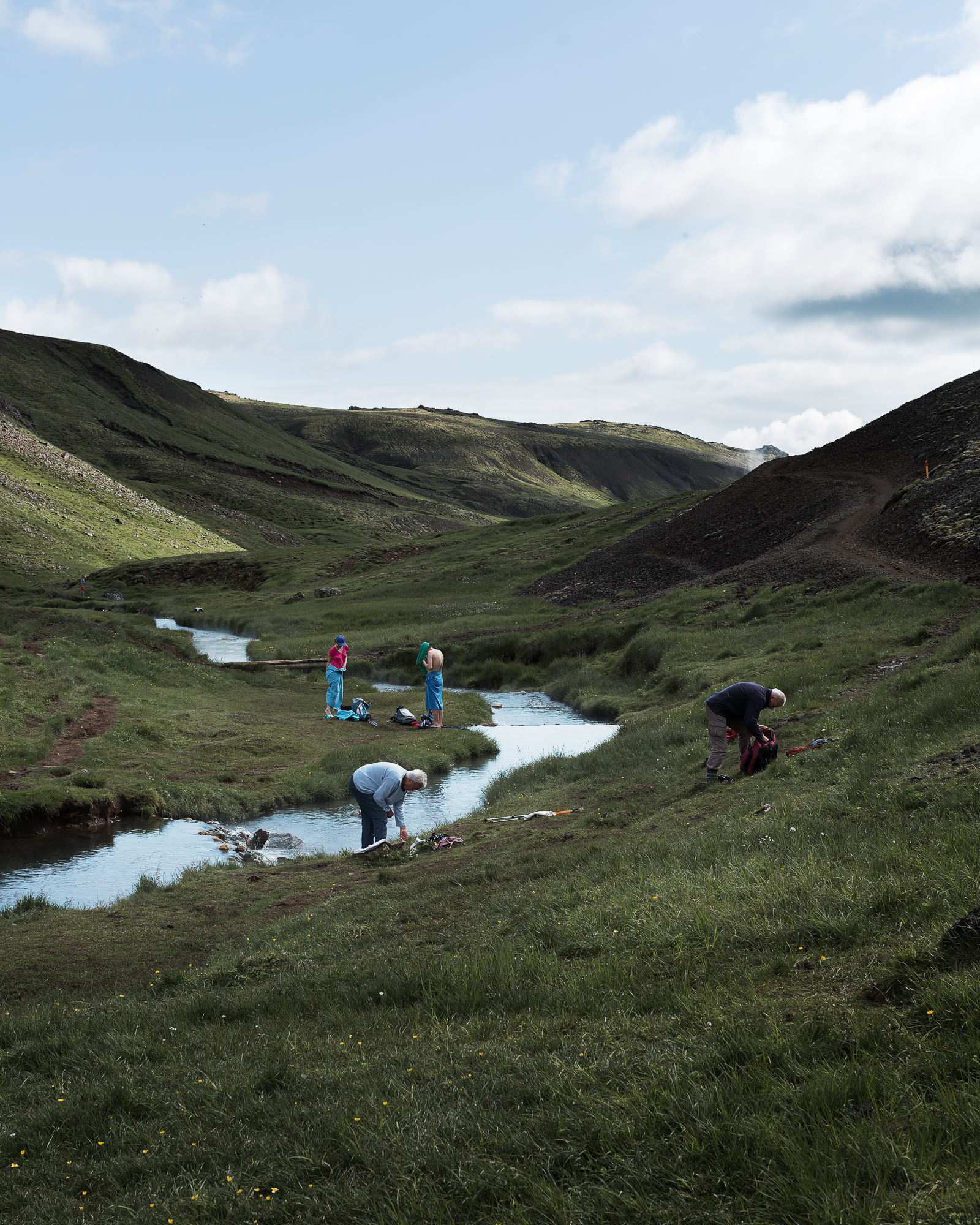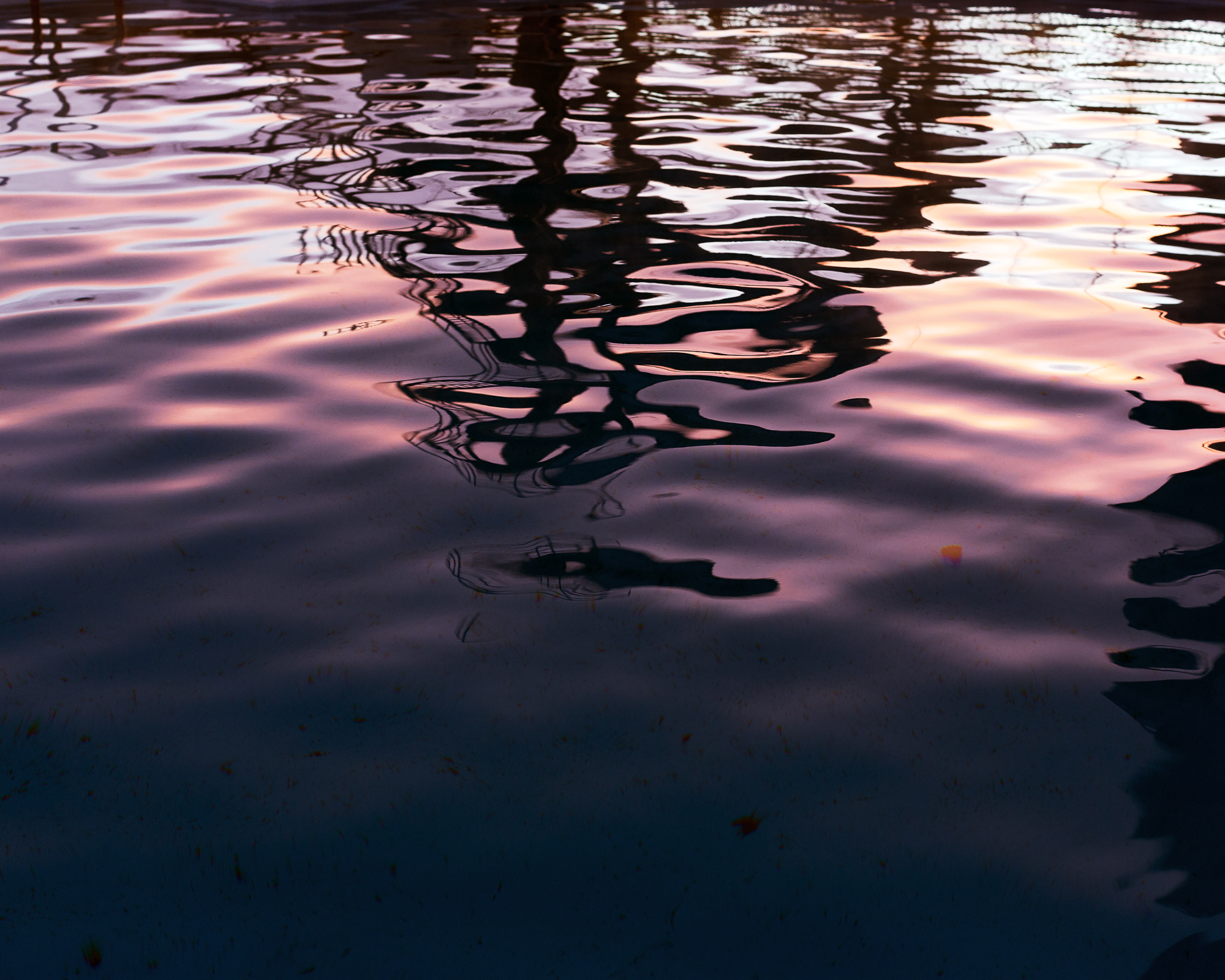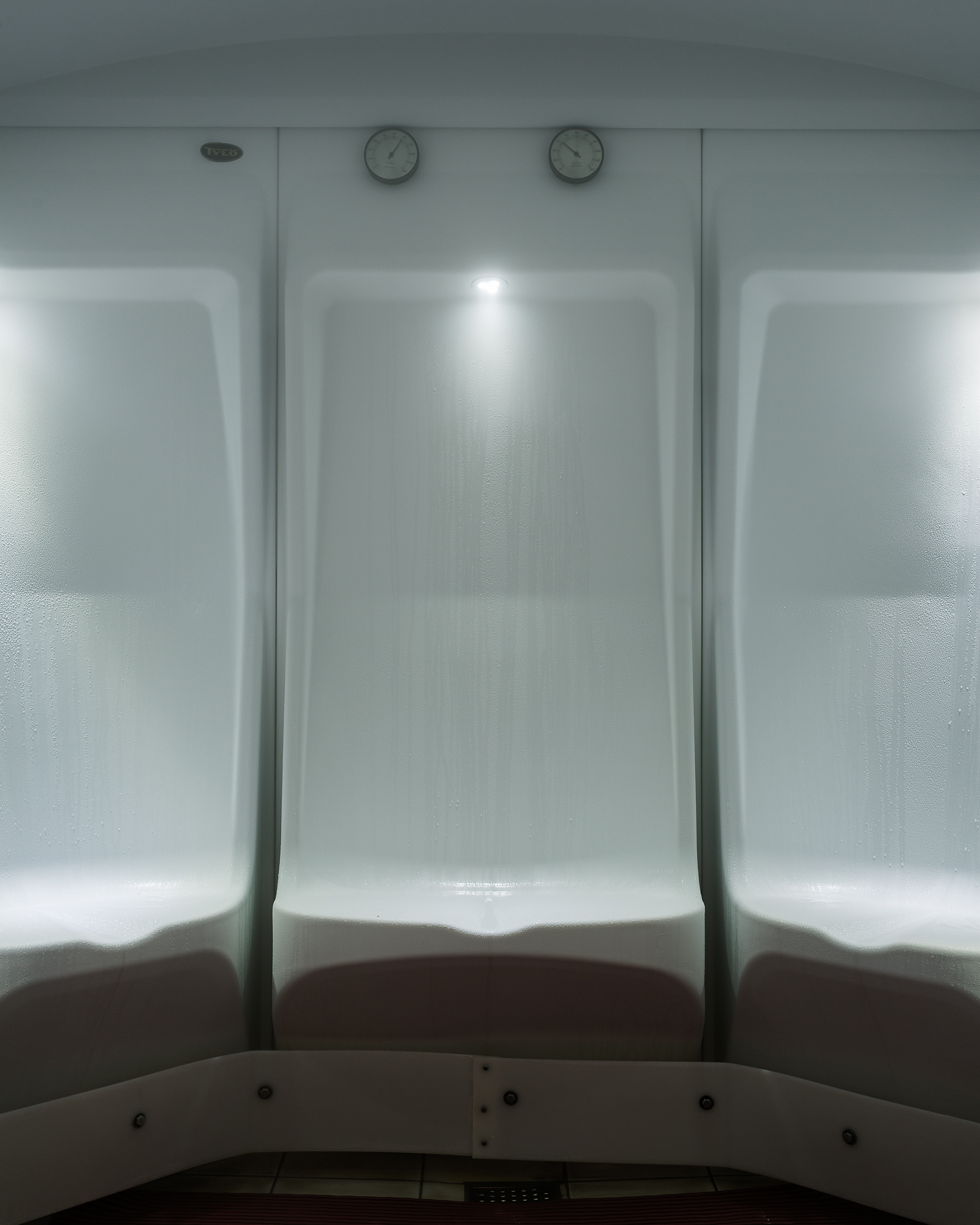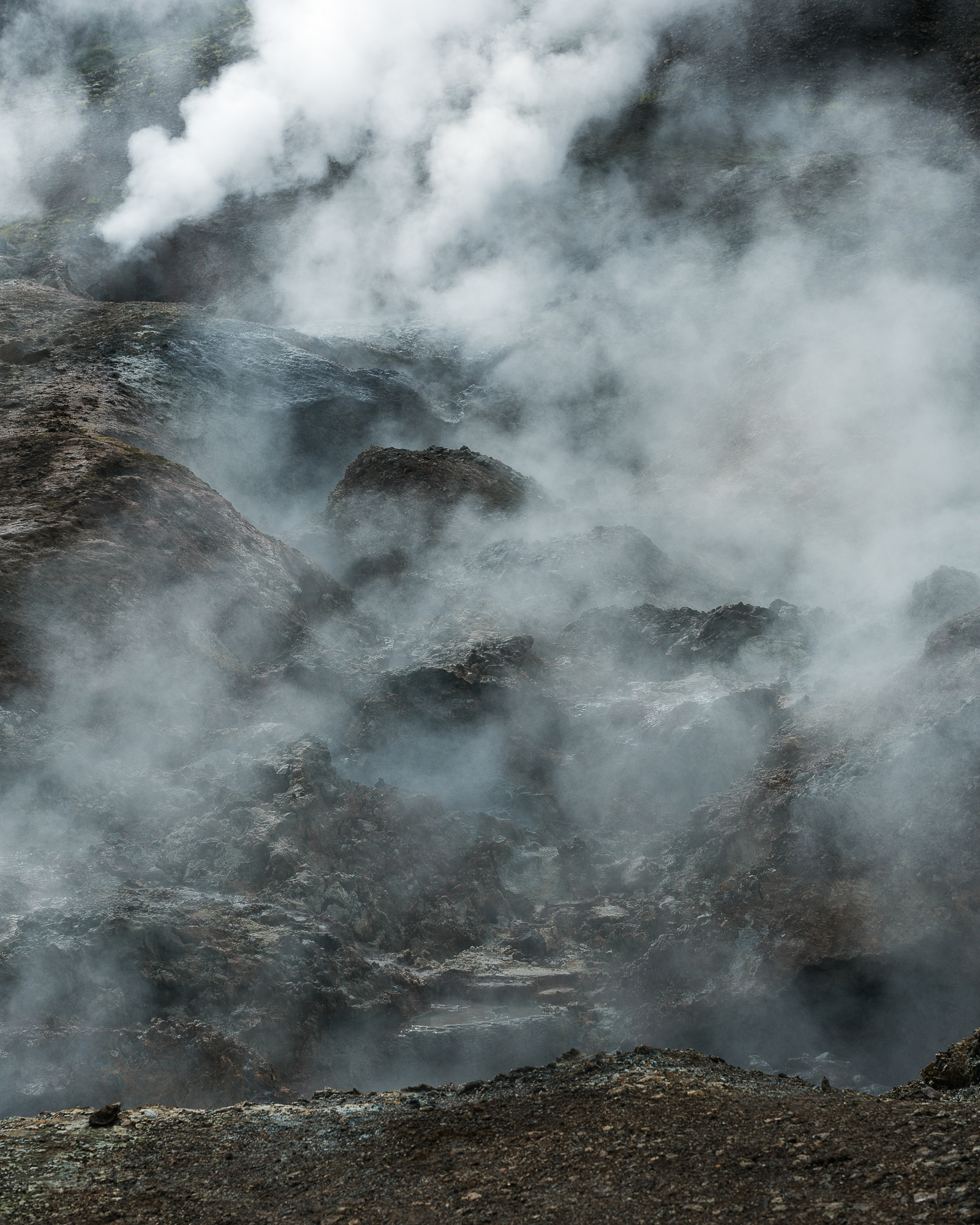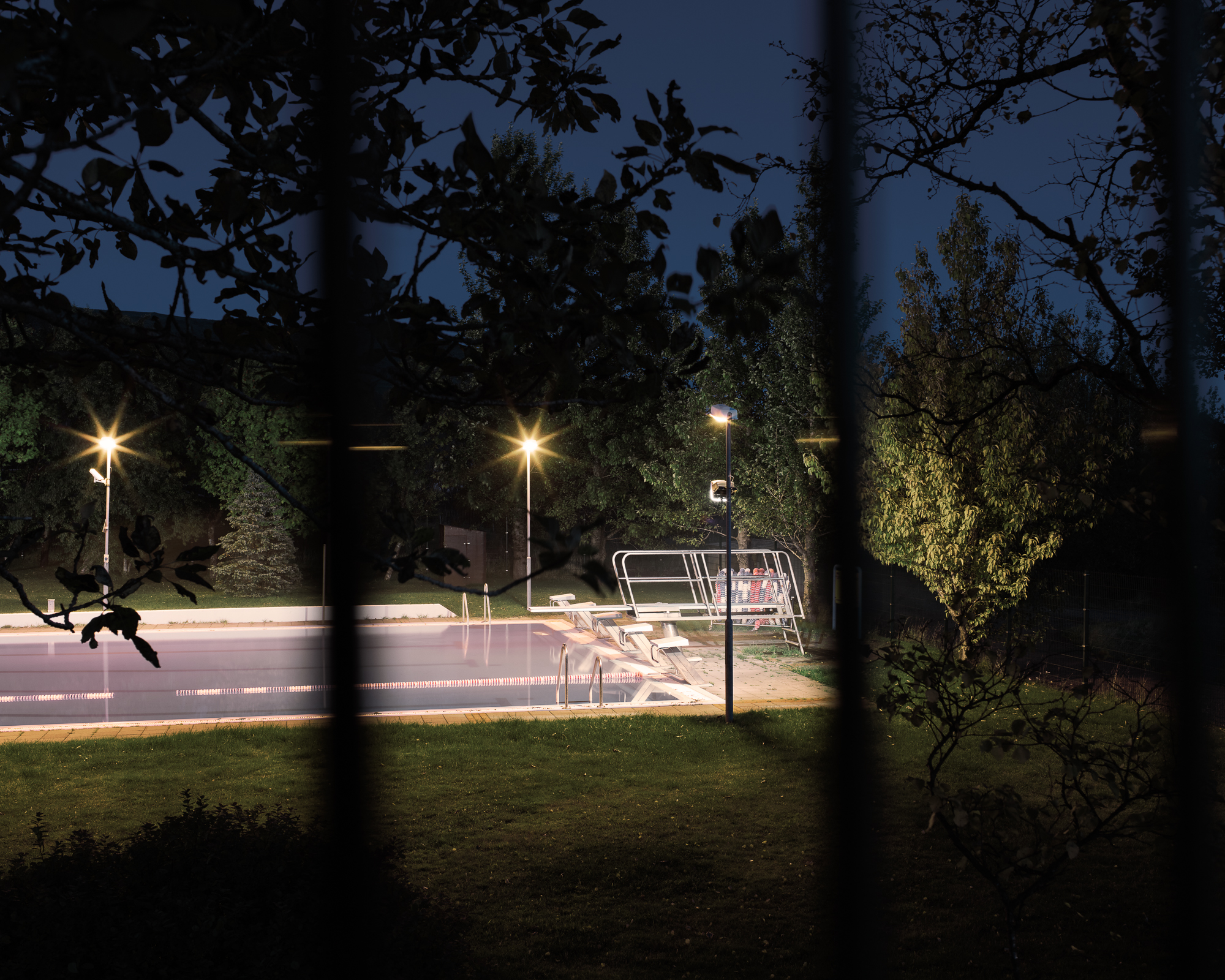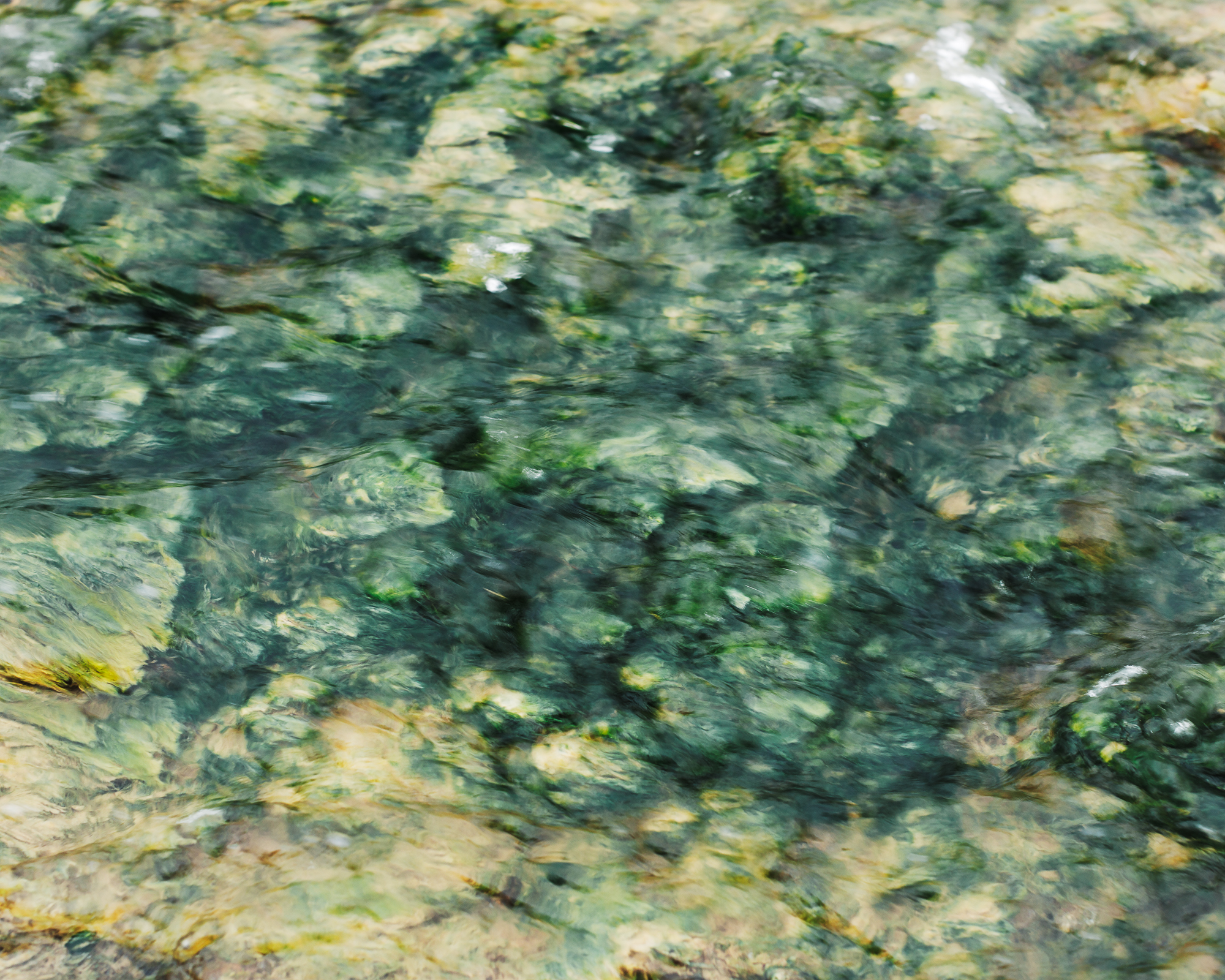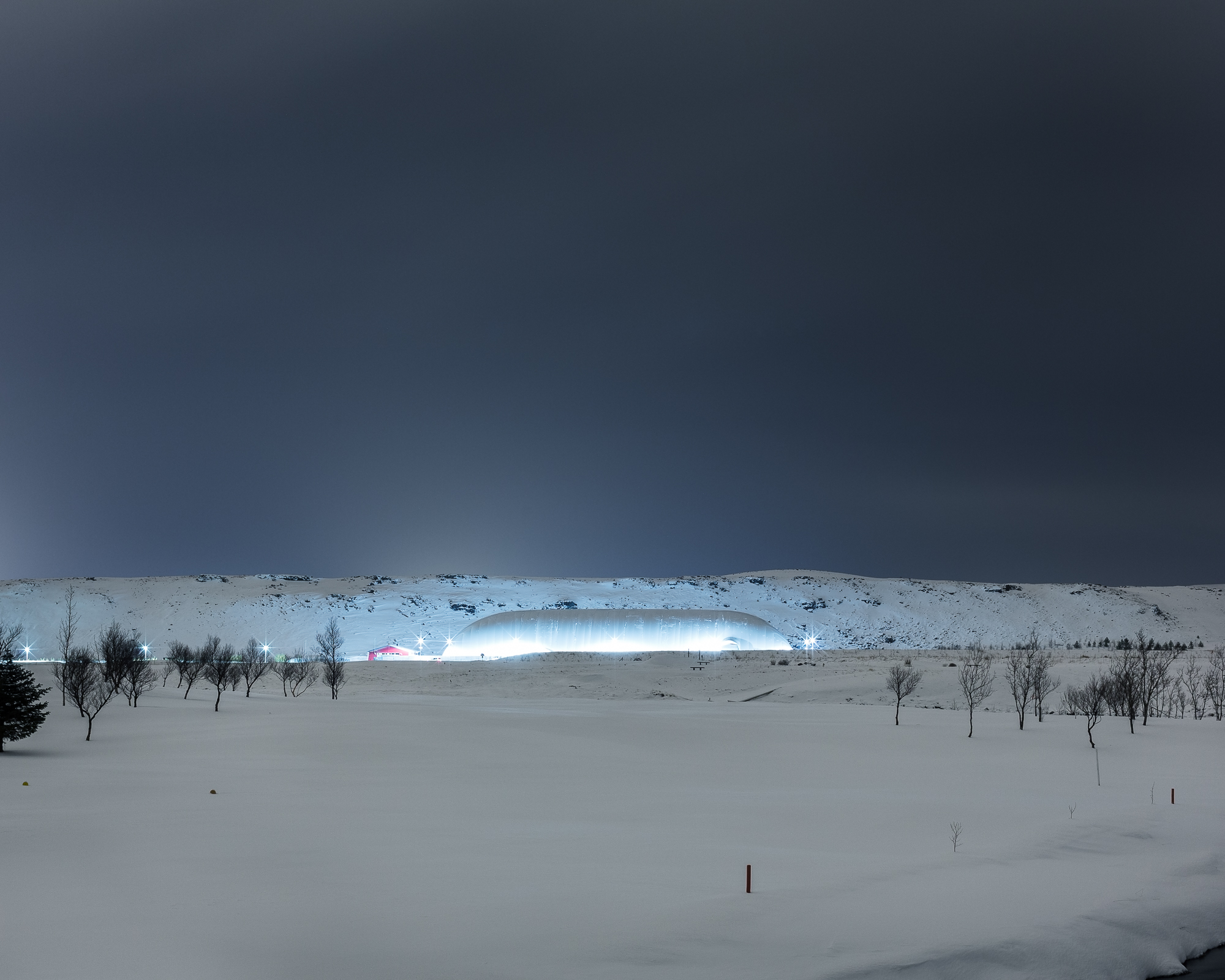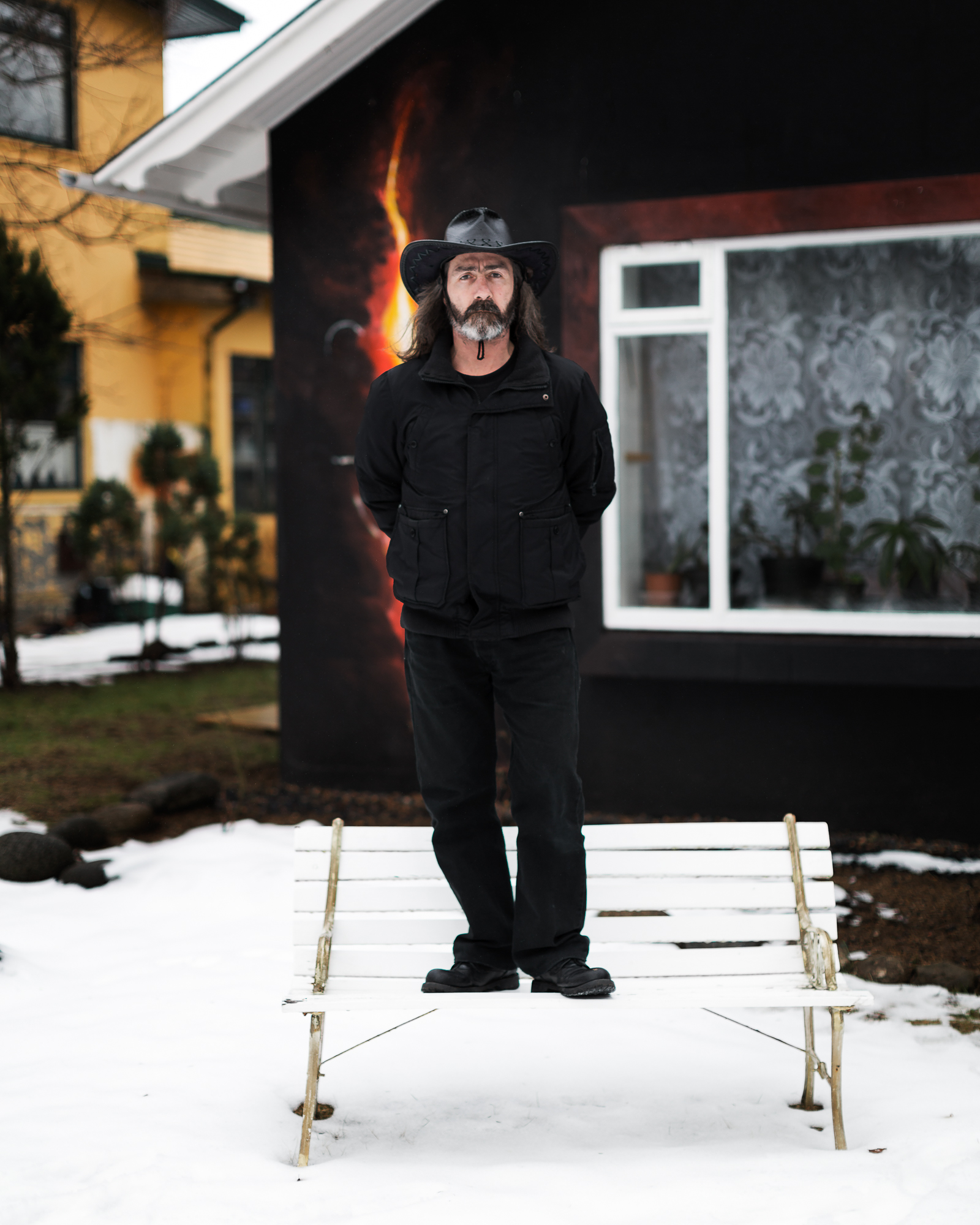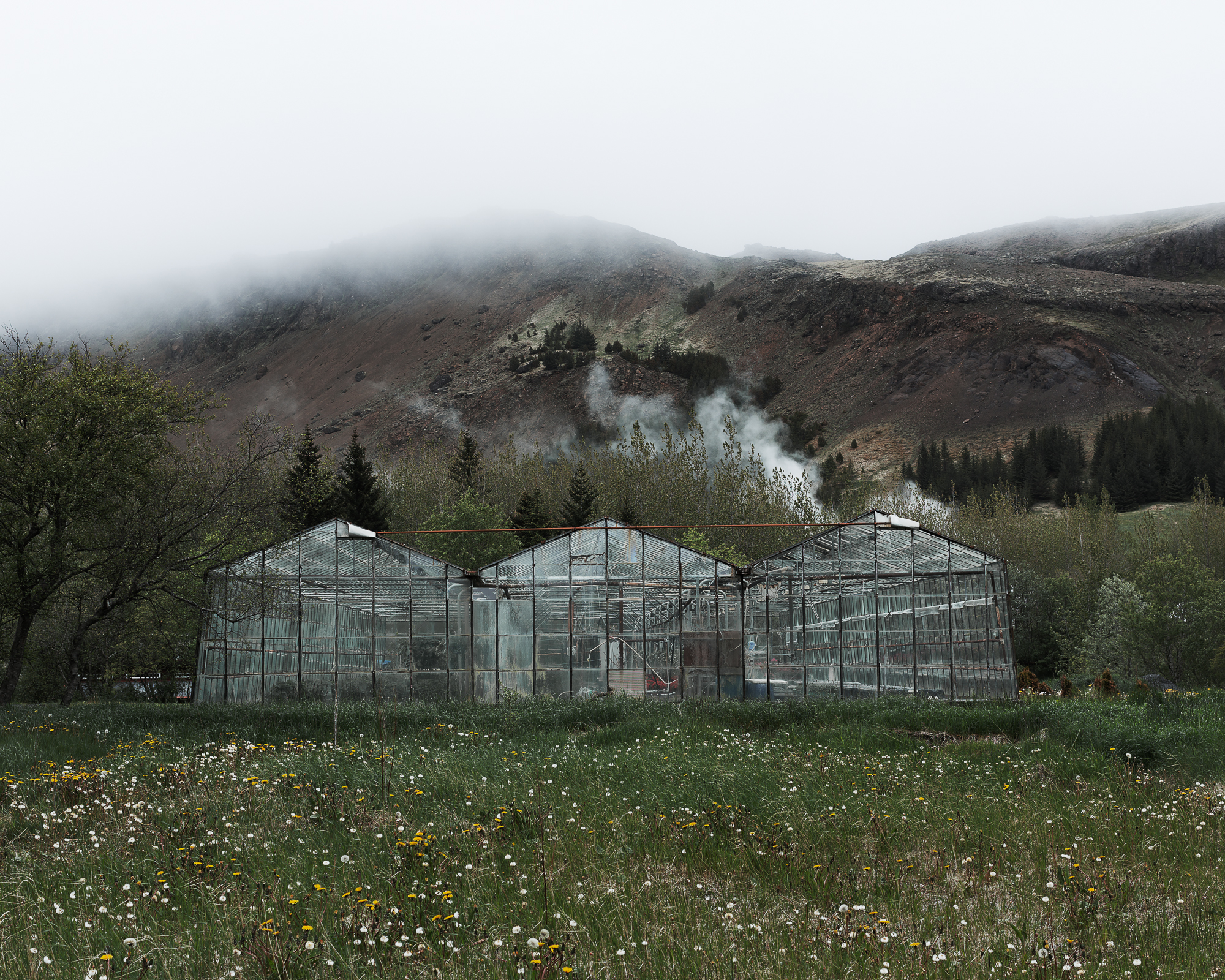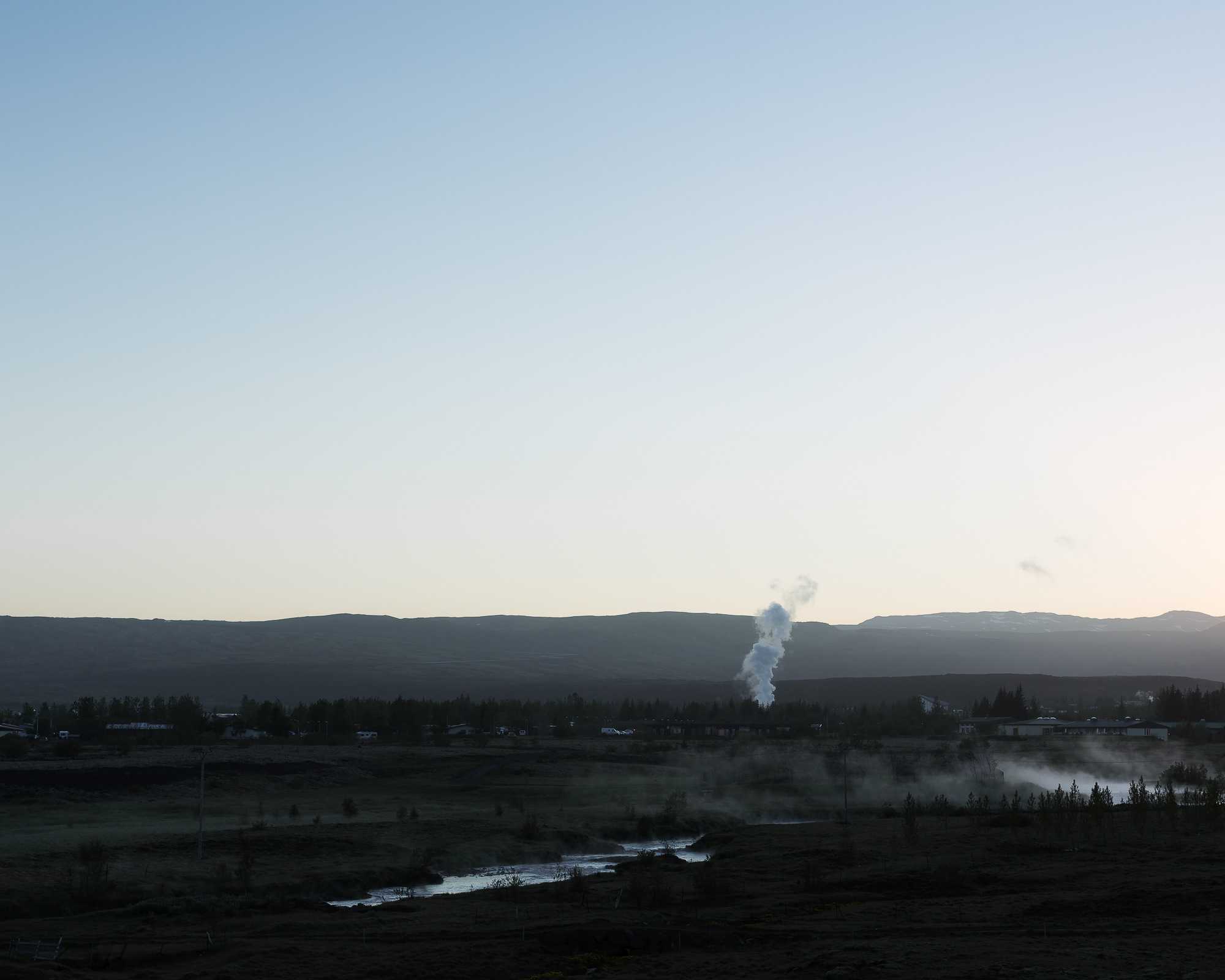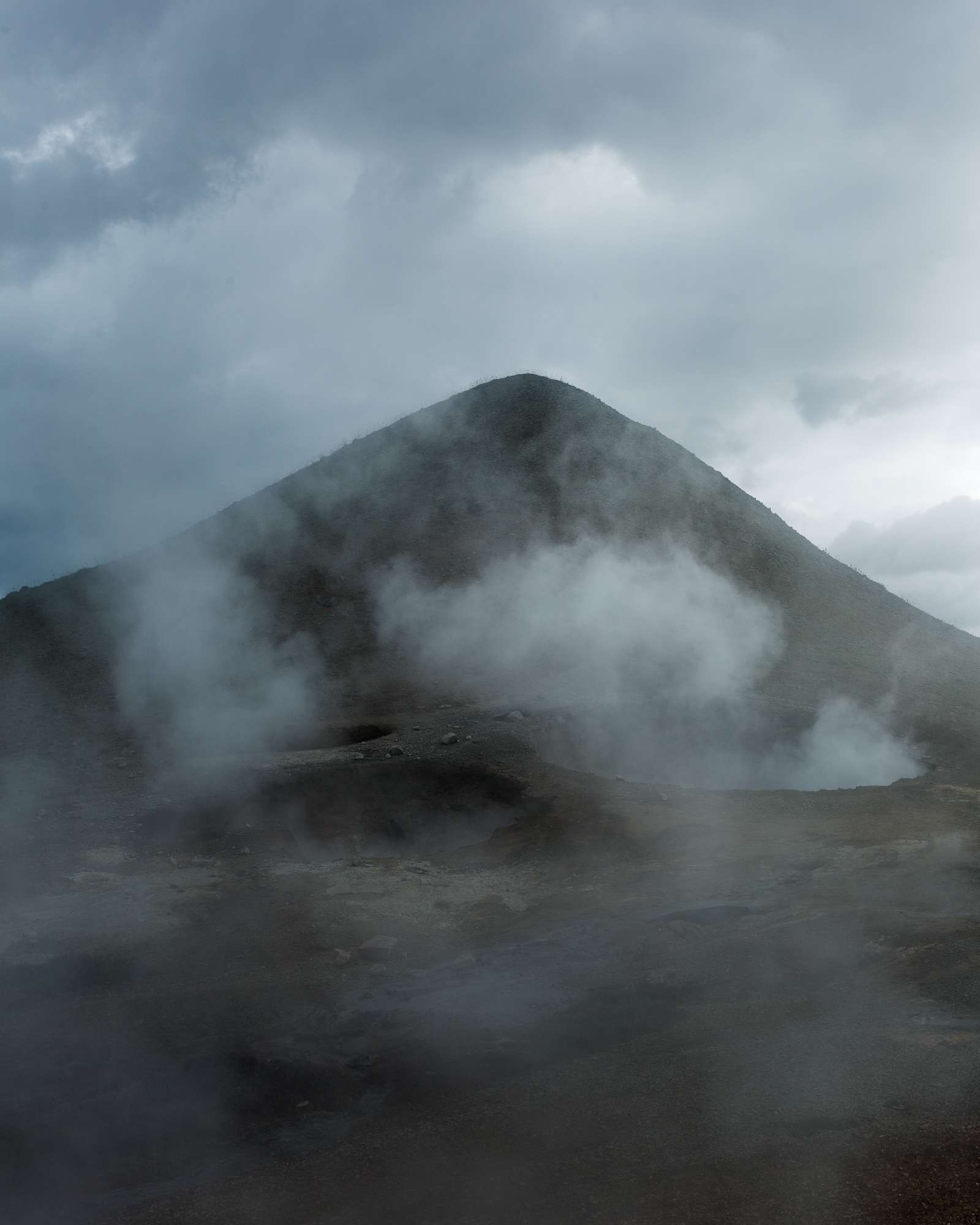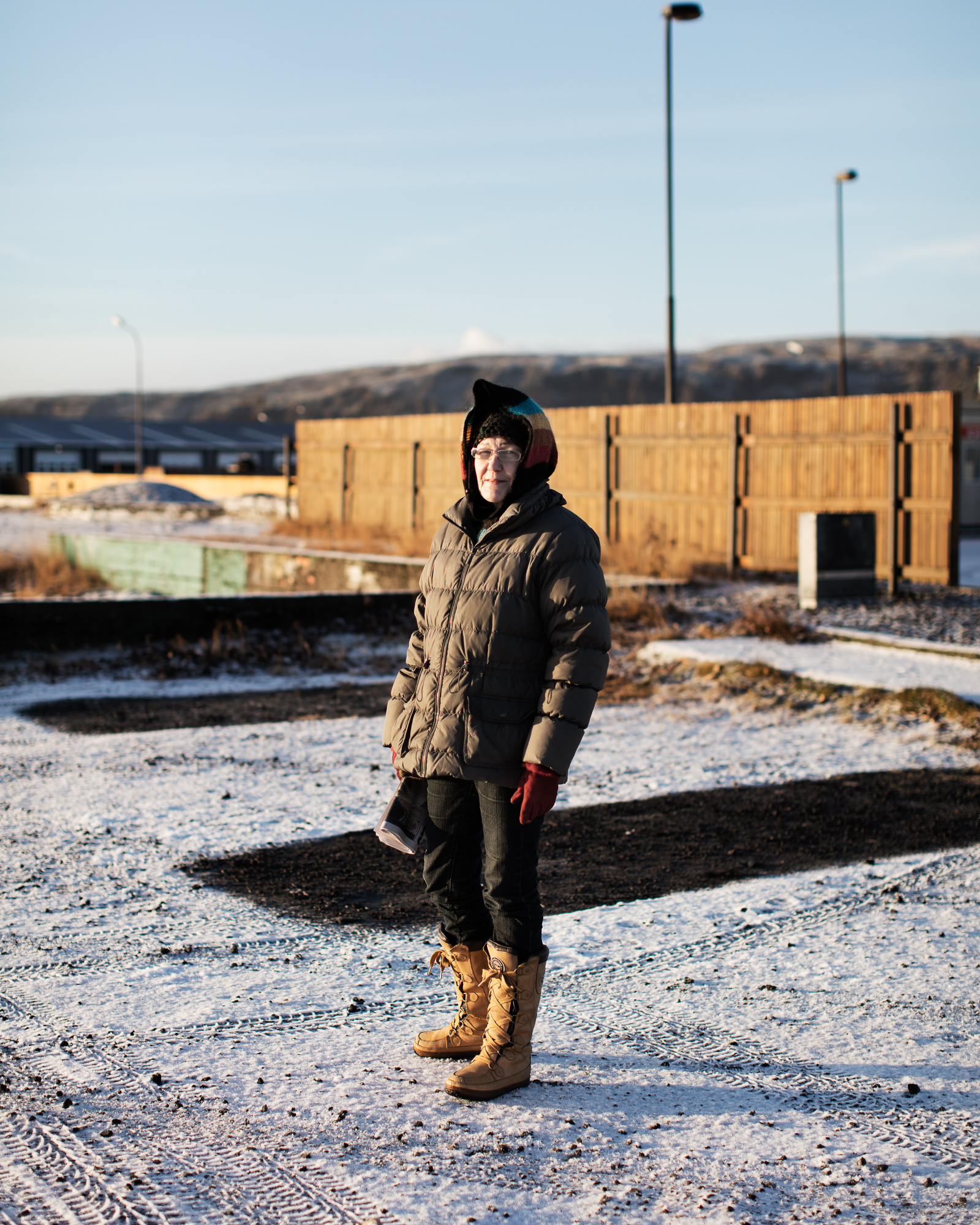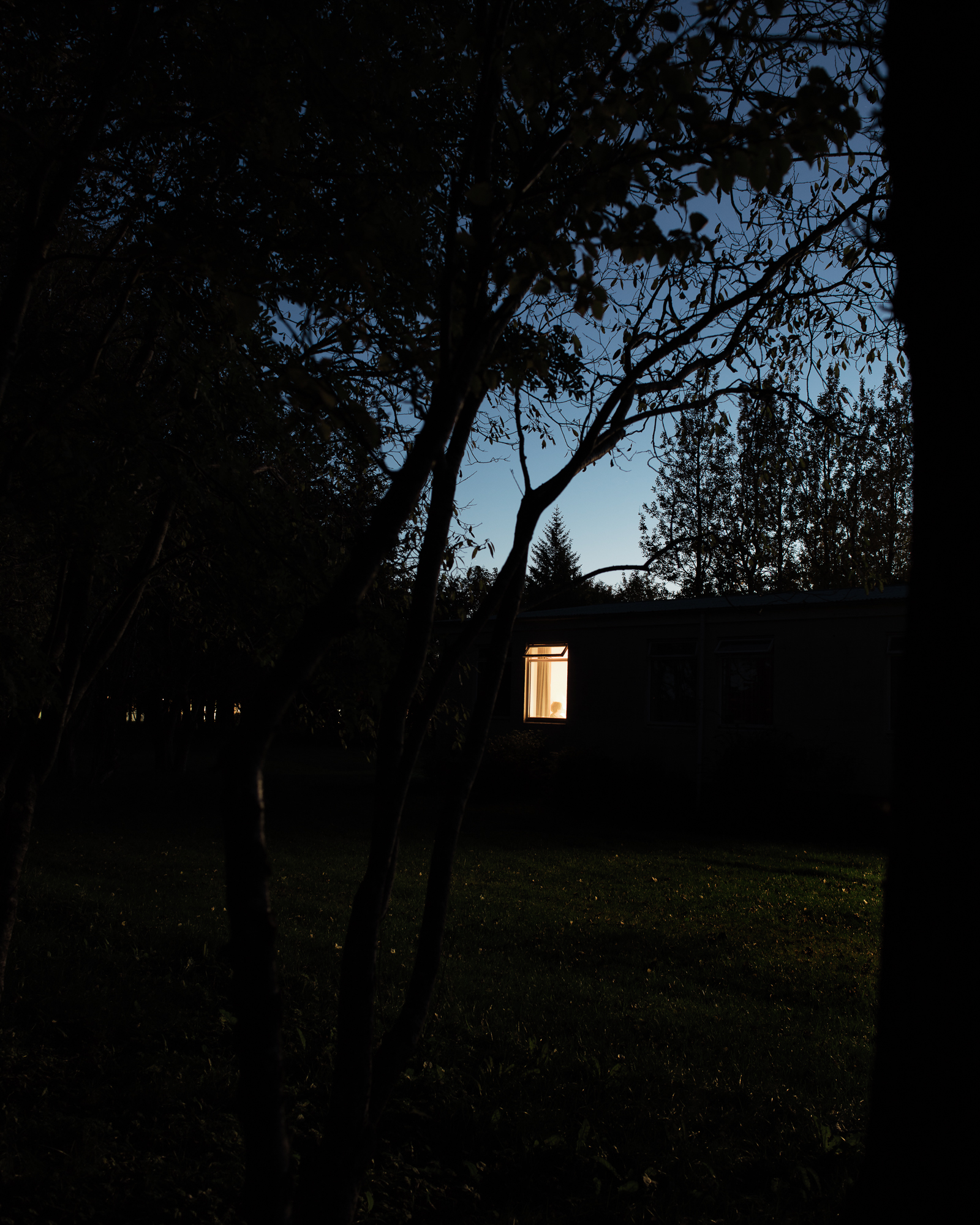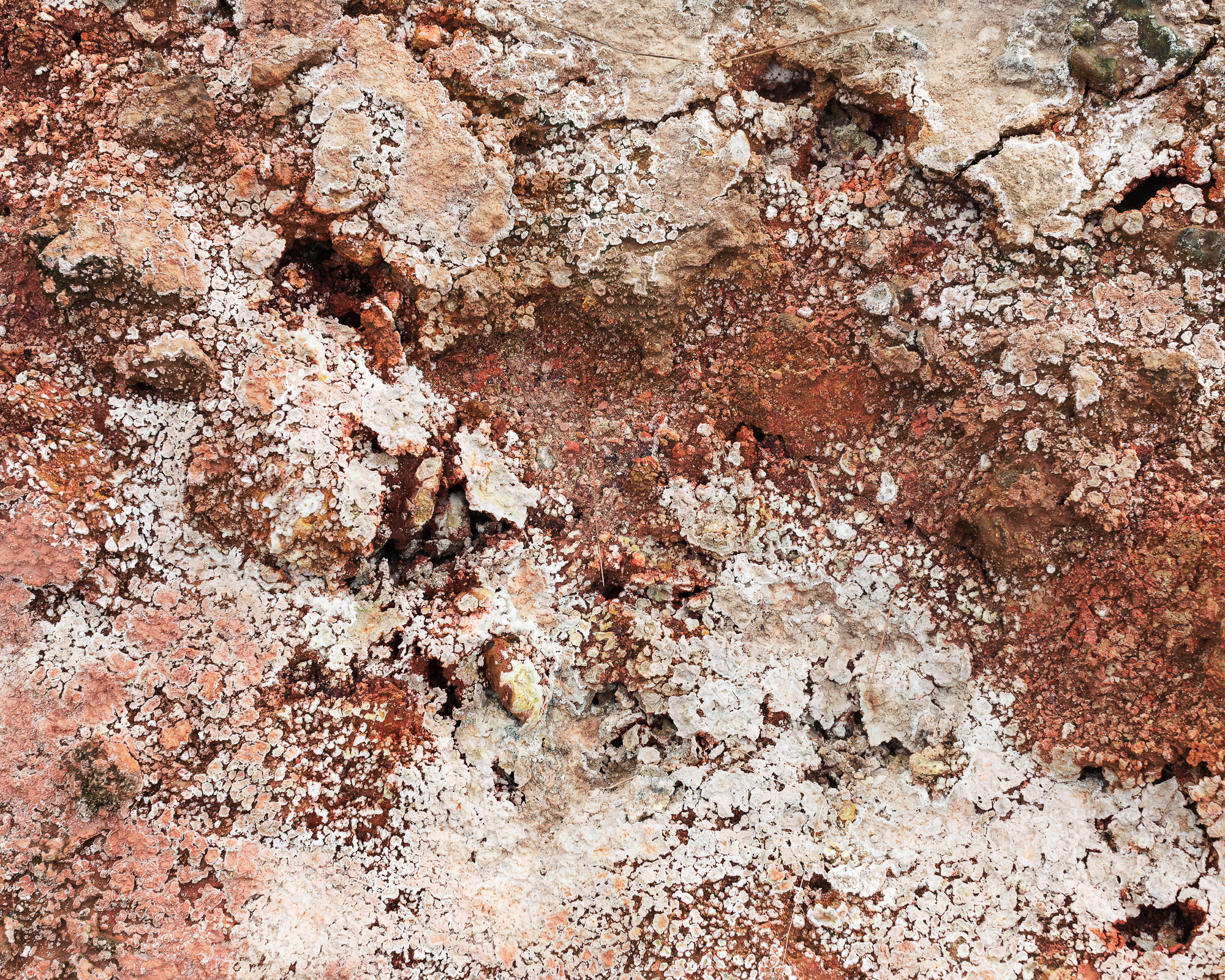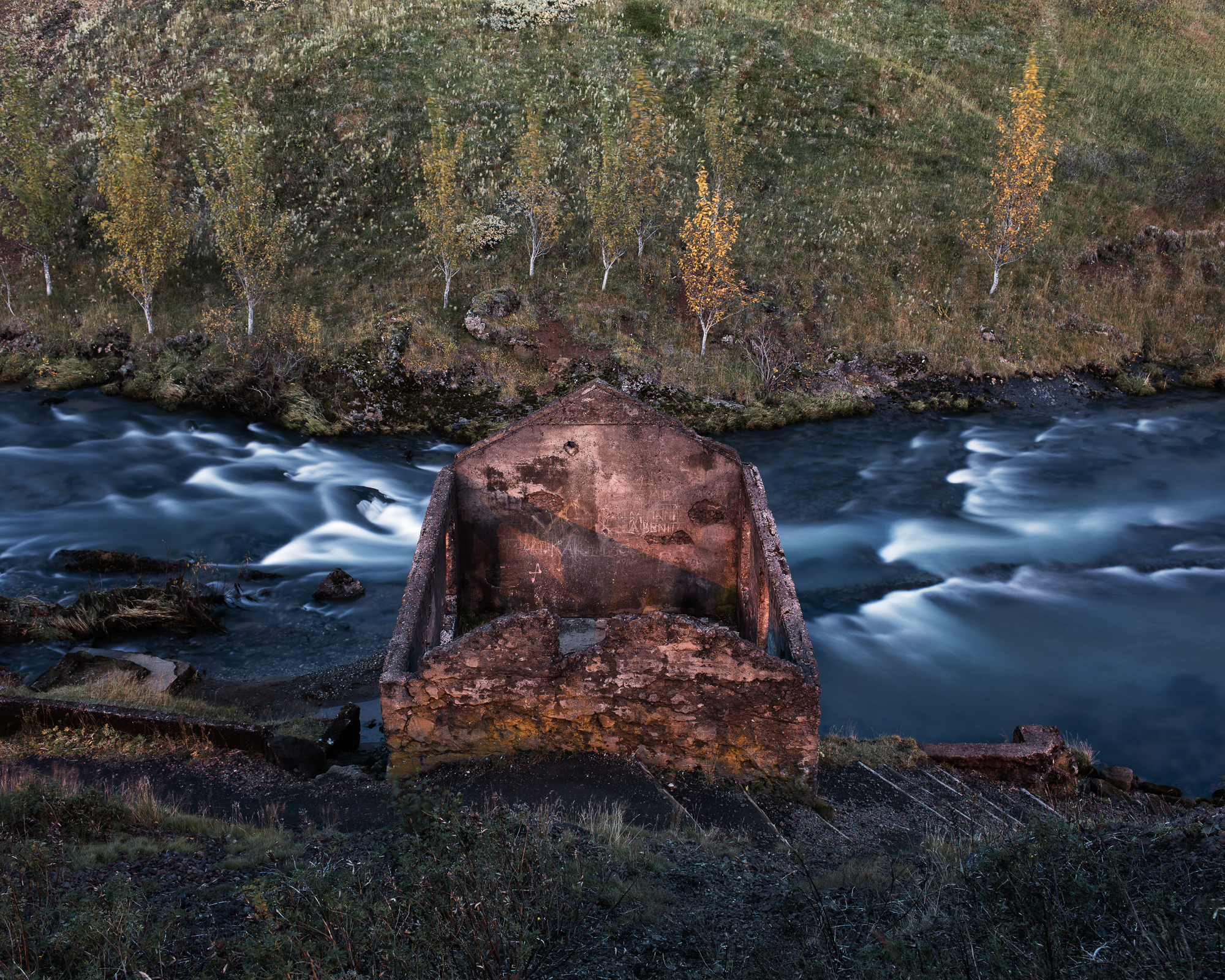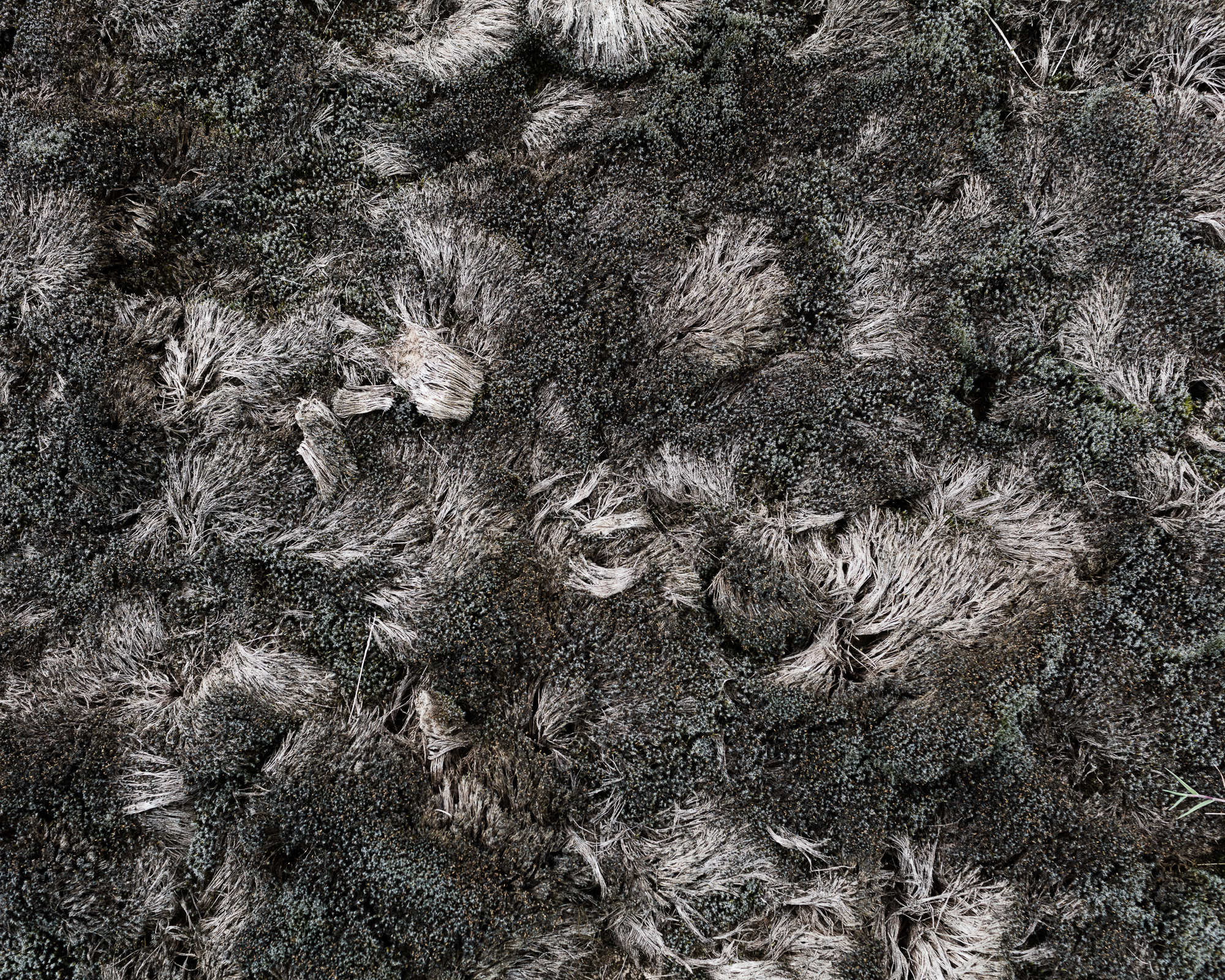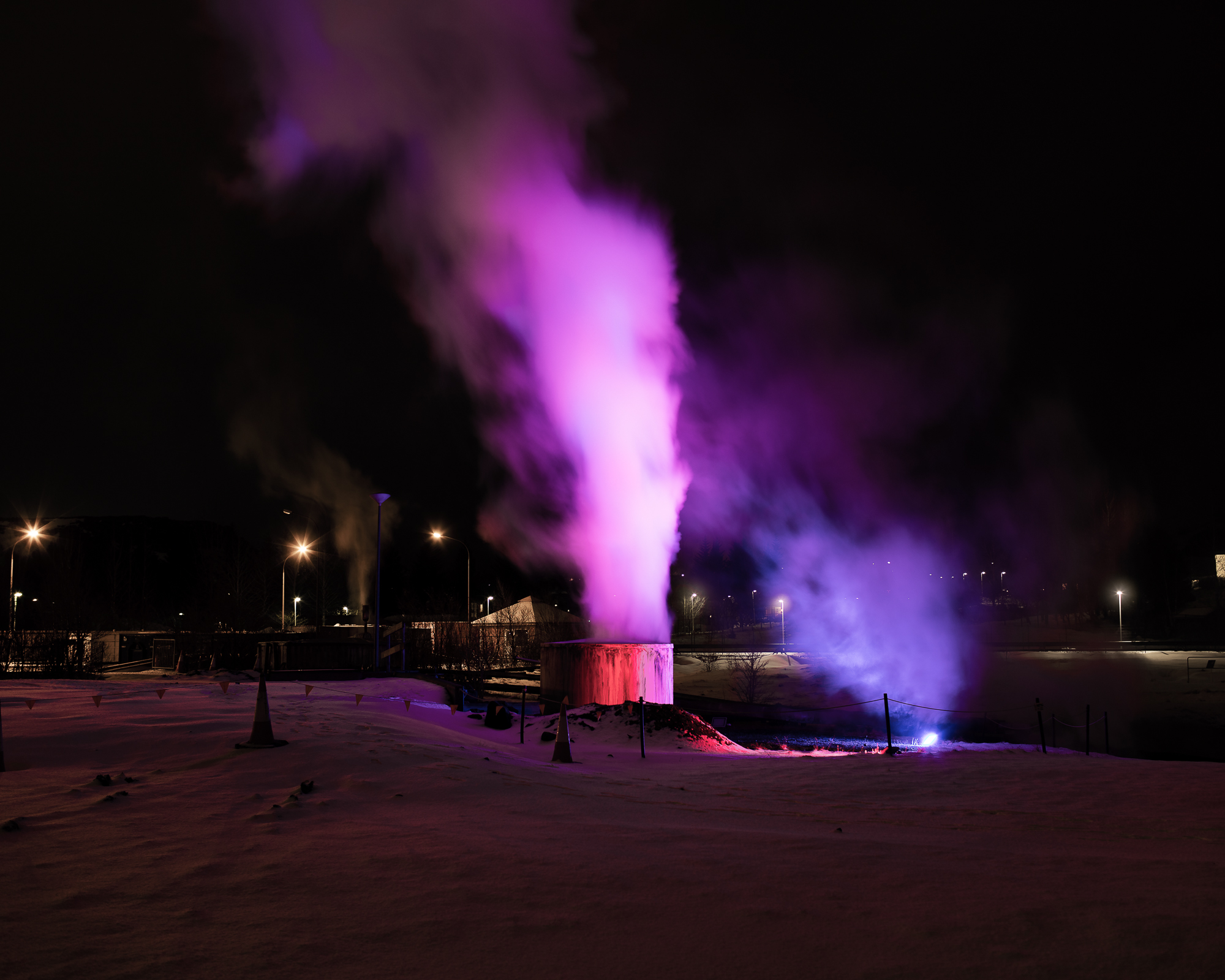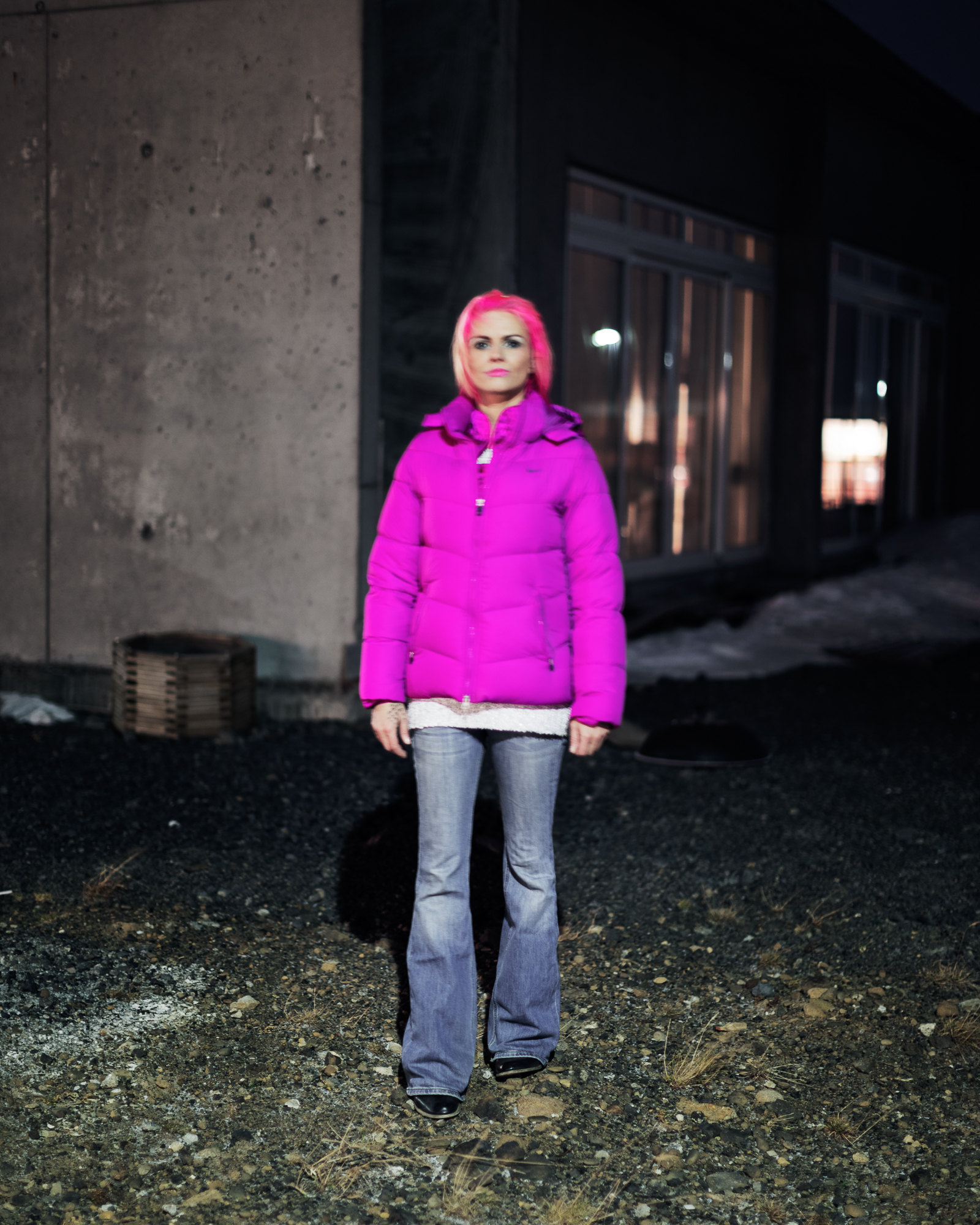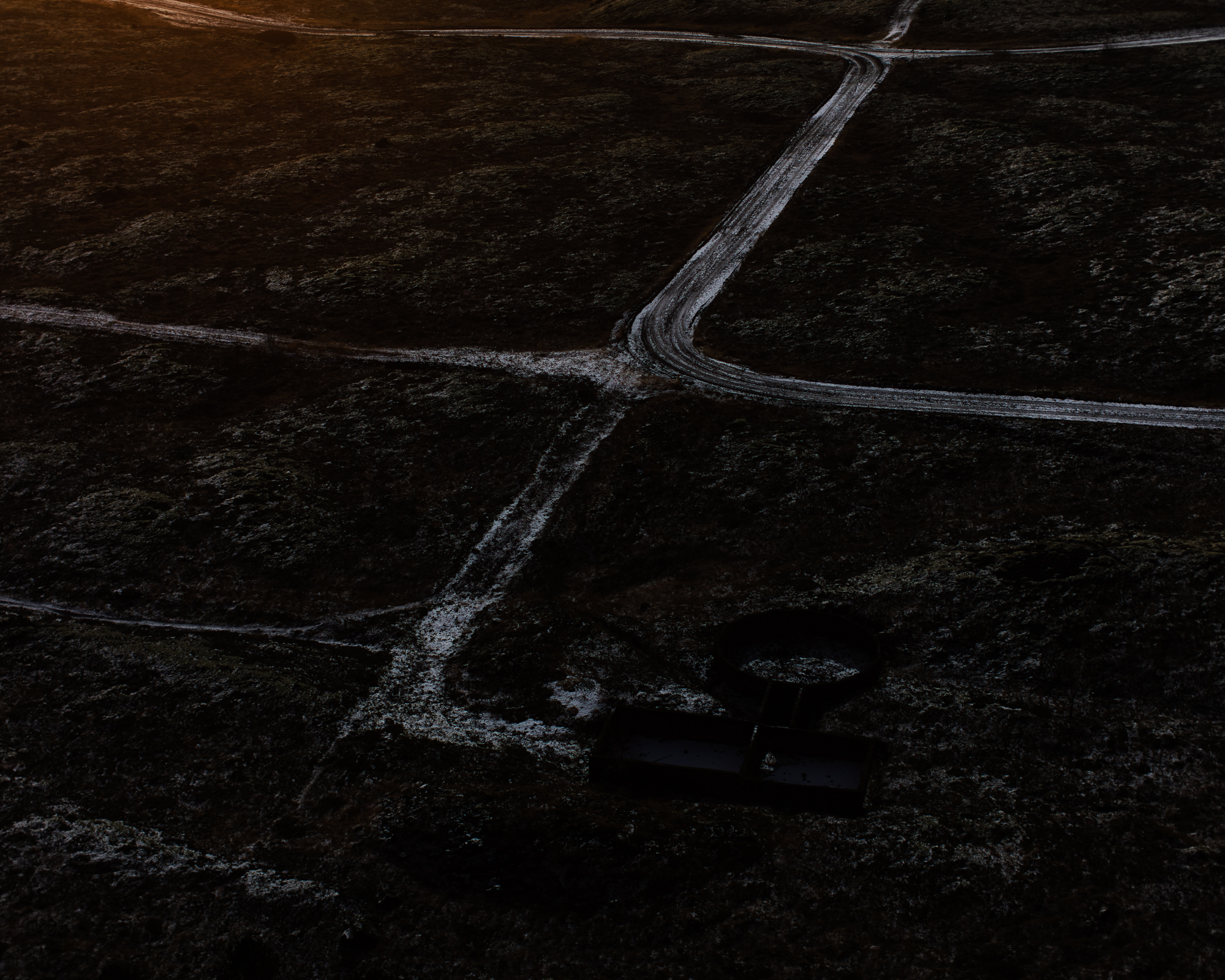An Island in Ölfus
A small town has evolved surrounding an active geothermal area in the South of Iceland. The town was named Hveragerði, a name closely linked to thermal activity whereas hver means a hot spring in Icelandic. Hveragerði is now and has always been close to Road 1 or the Ring Road as we call the main road that circles Iceland connecting its inhabitants. The town has always been considered a place of interest. It’s a place where hot water wells up from the earth in a constant flow. It may flow calmly for a while, predictably even, until it gushes forward forceful, loud and unpredictable.
The land is characterized by unusual sights such as colorful rock formations, fossilized sulfur, hovering clouds of steam and holes in the ground which are both interesting and mysterious in their nature.
Settlement in the area does not go far back in history. It is first mentioned in the book Fitjaannáll written around 1700 AD. Fitjaannáll documents the change in thermal activity following the great earthquake in the year 1597. The book tells of hot springs disappearing in some places while new ones appeared in different locations. Constant change is truly the nature of active geothermal areas. Periods of increased and decreased activity alternate control and there is now way of predicting if quiet or unquiet will reign in the future. The geothermal powers, right in the middle of town are quiet for now, much like a dormant beast. The inhabitants of Hveragerði however live with the knowledge that one day that beast may wake and show its powers.
Up until the year 1902 both the hot springs and hot water in Hveragerði were used by the inhabitants to do laundry, for bathing and boiling food. Around that time people became increasingly interested in harvesting geothermal heat to create jobs. People’s minds were set on progress and to get progress experiments were made. One of those experiments was a wool wash factory situated by Reykjafoss (e. Smokey Waterfall) in Varmá (e. Warm River). Various technological innovations followed the utilization geothermal heat. In the year 1907 for example street lamps were put up in Hveragerði making it the first rural area to illuminate their roads. Blinded by darkness, a man had fallen into a hot spring and died the year before. Street lamps were therefore deemed necessary as a security measure.
A local dairy factory called Mjólkurstöð Ölfusinga was built in 1929 as well as the first residential houses of the town to come, Varmahlíð and Fagrihvammur. The building of Fagrihvammur marks the beginning of an era of greenhouse production, the industry which the town is best known for today. In the years to follow the houses rose one by one surrounding the geothermal area, drawn to the warmth in the ground. The Horticultural School of Iceland, Garðyrkjuskóli Ríkisins, was later founded there. Watching Hveragerði from a distance to day there is no mistaking the bright orange glow from illuminated greenhouses along with steamy clouds reaching out to the sky.
The hot water also made our well known swimming pool, Sundlaugin í Laugaskarði, possible. The pool was built in 1938 and for a long time it was the longest swimming pool in Iceland. The collaboration of the people of Hveragerði and Ölfus (surrounding farm area) made the building of the pool a possibility but that’s a story for another day. In the years to follow people started to use the clay from the local hot springs for health treatments and in the year 1950 the National Hospital, Landsspítalinn, opened a facility for mud baths in the geothermal area. Shortly after that The Icelandic Association of Naturopathy, Náttúrulækningafélag Íslands, founded a sanitarium in Hveragerði.
Hveragerði was built and has survived because of geothermal heat. A handful of pioneers saw the opportunities this energy presented and thankfully had both the brains and diligence to make something out of them. We, the people who live here today may not have the energy in our midst in our everyday thoughts, however it is part of our lives, and affects our lives. For the better and for the worse. Our houses are either built close to or on top of rifts in the earth or hot springs. They have been damaged in earthquakes even to the extent where new hot springs have found their way through rifts in the rocks and appeared in the houses. The beast has stirred from time to time and although we enjoy it’s warmth we know to fear its power.
In this project / publication my focus is set up on the town Hveragerði and the people you find there, among the hot springs, clouds of steam and greenhouses.
Text by Valdimar Thorlacius

